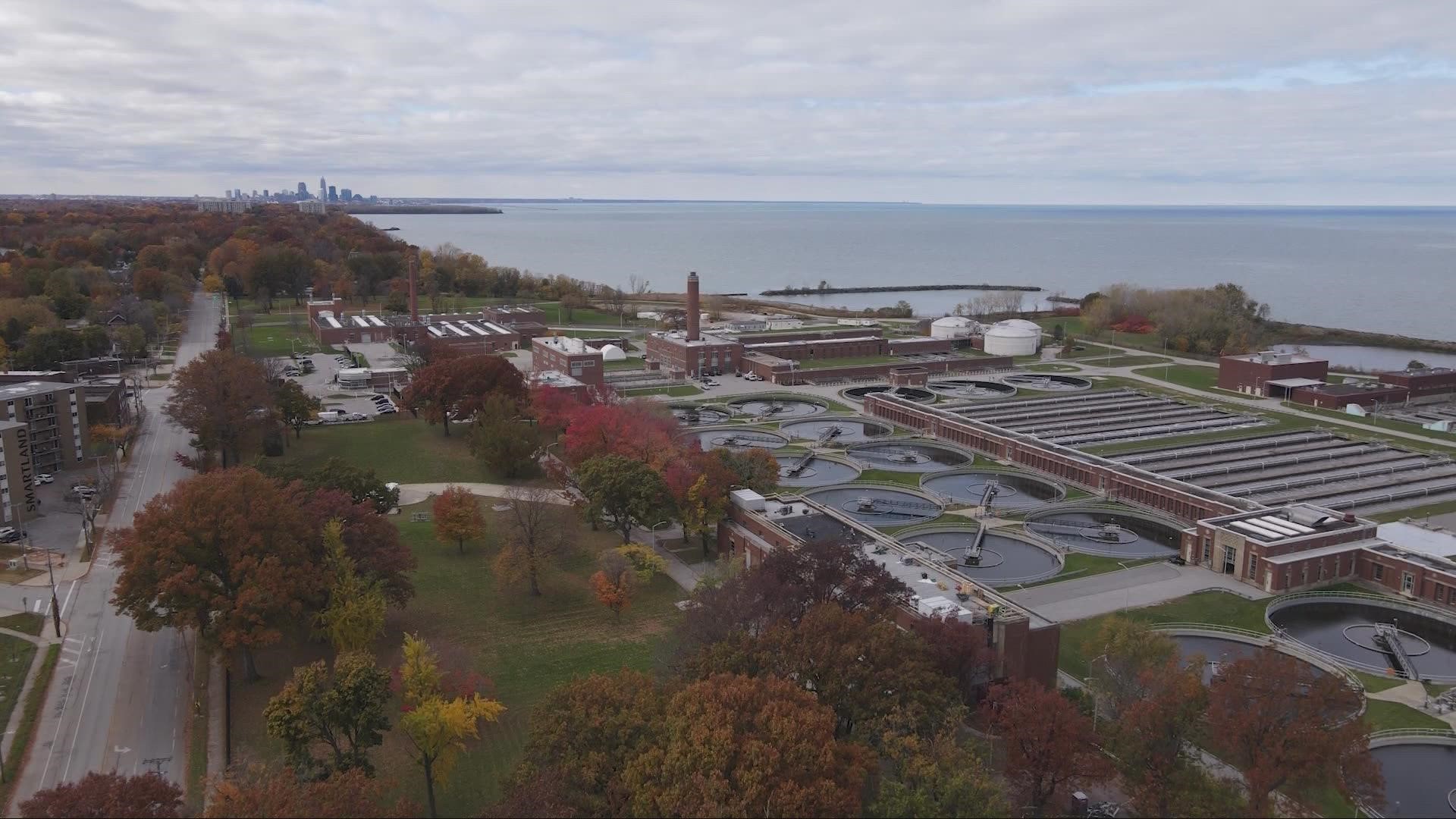CLEVELAND — How much thought have you really given to the water that comes out when you turn on your tap? Or where it goes after?
Here in Northeast Ohio, many of us are participating in and benefiting from a very important water cycle that all centers around Lake Erie. 3News Senior Meteorologist Matt Wintz recently got an inside look at the people and systems making it all flow.
The water treatment process all starts at one of the Cleveland Water Department's four local water treatment plants, and Matt got an in-depth tour of the Garrett A. Morgan facility in the Ohio City/Detroit Shoreway neighborhood to better understand the important process happening day in and day. These plants take the water through a multi-step process to remove dirt, bacteria and chemical impurities from untreated water pumped in directly from Lake Erie. The water that eventually ends up in your home comes from intake cribs located about three miles out in the lake before being treated to ensure it is safe to drink.
Water Quality Manager Scott Moegling led Matt around the various areas of the plant - each with a specific focus on on the various stages of coagulation, flocculation, sedimentation, filtration, disinfection and finishing that make up the entire treatment process. These stages work together to ultimately turn out potable drinking water for nearly 1.5 million Northeast Ohioans each year.
Moegling explained that the treatment systems here are still rooted in concepts and structures used nearly a century ago. However, advancements in technology and innovation are already showing impacts on the future of water quality.
"We can test for pharmaceuticals, [and various] organics that might be out in Lake Erie," Moegling explained inside the Compliance Laboratory. Here, high-tech instruments work to spot potential challenges to water systems, like algal blooms and PFAS, also known as forever chemicals.
"We're fortunate. We've been doing some testing and we've had almost 300 samples of PFAS analysis done and we've not had any detections not only in the finished water, we've not had any detections in the raw water," Moegling said.
And that's where the other essential piece of the treatment puzzle comes in. Cleveland Water's partner in the filtration process is The Northeast Ohio Regional Sewer District (NEORSD), and it's their job to to keep those kinds of harmful contaminants from going into the lake in the first place.
To better understand that process, NEORSD Plant Superintendent Bob Bonnett showed Matt around the Easterly Wastewater Treatment Plant in Cleveland.
Bonnett explained that NEORSD's three plants are constantly processing wastewater from multiple sources – not only from our sinks and toilets
"It’s a combination of sanitary sewage and then when there is stormwater runoff, it goes into the same combined sewer and all that flow does come to the plant," Bonnett explained.
Between 80 and 400 million gallons of water are treated in the three plants each day.
These plants too, are where historic facilities meet modern technology. Bonnett told Matt that you'll still find the original 1930s conduit still in use, right alongside state-of-the-art hypochlorite storage tanks.
Both organizations work in tandem to ensure we can enjoy clean water from lake, to tap, and back again.
"That water is our quality of life. Life needs water. And if we've got a great source of water, you know, you'd like to think that that has an impact, not just on the quality of life, but also economics. We have a great water resource," Moegling said.
"It's always in the back of my mind why I'm able to go in the water and why everybody who's recreating at Edgewater, for instance, has the ability to do that," Bonnett told Matt. "And it's because of the work that we're doing here."

